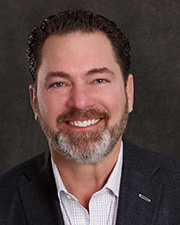
Question of the Month: How can building owners save money, energy, and create a more sustainable planet for future generations? - by Donald Gelestino

As president of Champion Elevator and 35+ year elevator veteran I can provide some very insightful solutions to building owners with tips from simple items that I learned from working in the field for many years to other technology advancements I have learned by traveling the globe and attending symposiums, classes, and technology meetings all while listening to trends and patterns that plague building owners.
Some items building owners can do to help make their building more sustainable and reduce their carbon footprint usually happen during modernizations. There are many ways to save money and reduce energy consumption in the present times.
Robert Masterson, chief technology officer of Champion Elevator, has presented factual case studies during lunch and learns, board meetings, and tradeshow roundtables. Some items noted when modernizing are as follows:
D.C. (direct current) hoist motors and D.C. gearless machines using motor generator sets, should be replaced with AC Gearless type systems. In this case, Champion also recommends going with regenerative drive units that can return energy back to the building’s power grid which is produced while the elevator is running. Some may say, well that’s a “no brainer” but the reality is that only a fraction of the modernized AC gearless units installed utilize regenerative drive systems as they cost upwards of $10k more and when looking at the time to recoup those funds most buildings simply opt out of the additional upfront costs. I believe as people become more concerned with the environment and the impact of every kilowatt we consume, this trend will change. On large multi-elevator commercial buildings, Destination Dispatch (DD) is a great way to use less energy and provide a more efficient passenger traffic flow. This technology uses no buttons in most cases and has a kiosk located in the lobby floor(s) and each floor of the building. You simply select a floor, and the screen on the kiosk tells you which elevator to enter. The DD operation groups passengers by the same or similar destinations which in turn reduces the amount of trips an elevator has to make with same amount of traffic, providing quicker time to destination and an increase overall efficiency…all while saving energy! Also using serial communication in lieu of multi-wire hatch cable reduces the number of raw materials such as copper and the fire-retardant coatings. This also will help the environment.
But there are plenty of one-off real-time things every building should consider right now… Check to see if the lights in your elevator cabs are LED type and if the lights and fan stay on while the elevator is sitting idle with no passengers? All night? Installing a control unit for the cab lights and fans to operate only while the elevator is in use, is another way to conserve energy.
Also, light fixtures in areas such as elevator car tops, pits and overhead spaces should all be checked and replaced with LED lights. When doing so, always be sure to comply with the applicable codes and comply with the brightness requirement of the bulb.
Proper insulation and ventilation of machine room spaces is another key “unseen” item which the Champion team brought up. If a machine room skylight is broken, heated or cooled air can escape, and water penetrations can occur. If not corrected, machine rooms can become overheated and premature degradation of your elevator controls and electrical equipment are most likely to occur. Printed circuit boards, solid state drives, and motors are required to operate in a temperature-controlled environment, ideally between 60 and 100 degrees maximum. Thermostatic controls of machine room spaces are often overlooked but they can contribute to big savings for a building in the long run.
Another item is water intrusion in elevator pits stated president of maintenance operations Robert Monforte, there are ways to stop water penetrations, even if the building has a stream beneath it. However, many buildings just keep pumps running and don’t consider the long-term damage and negative effects that the water and moisture can have on a lot of the elevator equipment. Those pumps cost money to install, they cost money to run, they require maintenance, and may also need future replacement. If you consider all these costs over a 10-year period, you will most likely find that correcting the water intrusion problem is a much better long-term solution and more cost-effective way to go. Additionally, it reduces the risks and hazard for workers and other personnel who need to access an elevator pit.
The Champion teams offers complimentary lunch and learn sessions to all building management companies, co-op boards and facility management teams. Together we can create a better future for generations to come. I am willing to share my resources and educations with everyone.
Donald Gelestino is president and CEO of Champion Elevator, Westport, Conn.